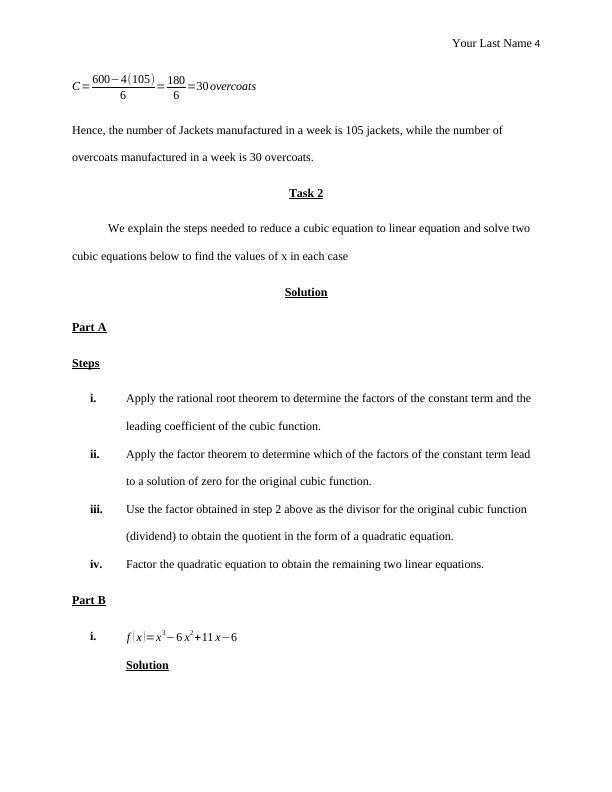Ask a question from expert
HE School of Construction and Built Environment Building Services Engineering and Civil Engineering Your Last Name 12 HE School of Construction and Built Environment Building Services Engineering and
12 Pages1180 Words128 Views
Added on 2021-12-13
About This Document
Problem 2 Write the linear equation in simultaneous form as below: Step 3 Solve the simultaneous equation using the substitution method to obtain the number of coats and jackets manufactured in a week. Substitute the value of C into the second linear equation and solve for the number of Jackets J: To determine the number of overcoats manufactured we substitute the value of jackets into the equation 1 above: Hence, the number of Jackets manufactured in a week is 105 jackets, while the number of overcoats manufactured in
HE School of Construction and Built Environment Building Services Engineering and Civil Engineering Your Last Name 12 HE School of Construction and Built Environment Building Services Engineering and
Added on 2021-12-13
BookmarkShareRelated Documents
End of preview
Want to access all the pages? Upload your documents or become a member.
Diploma in Construction and Built Environment PDF
|13
|1180
|170



